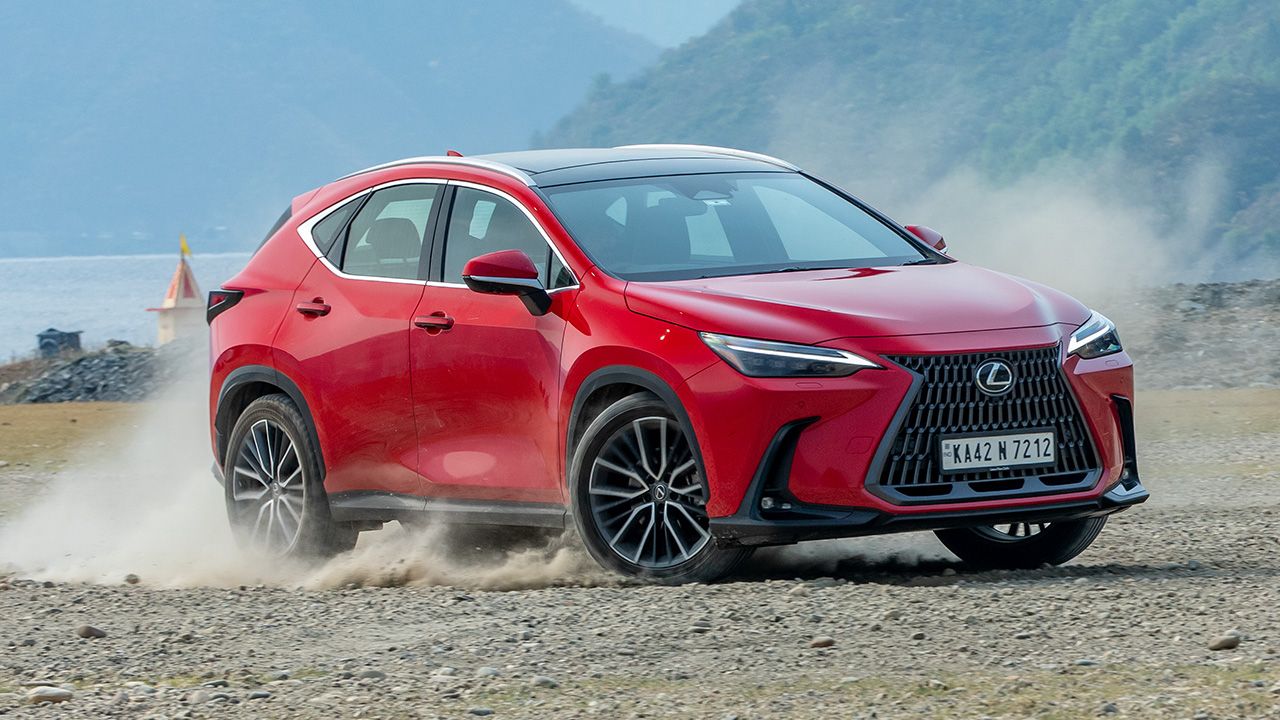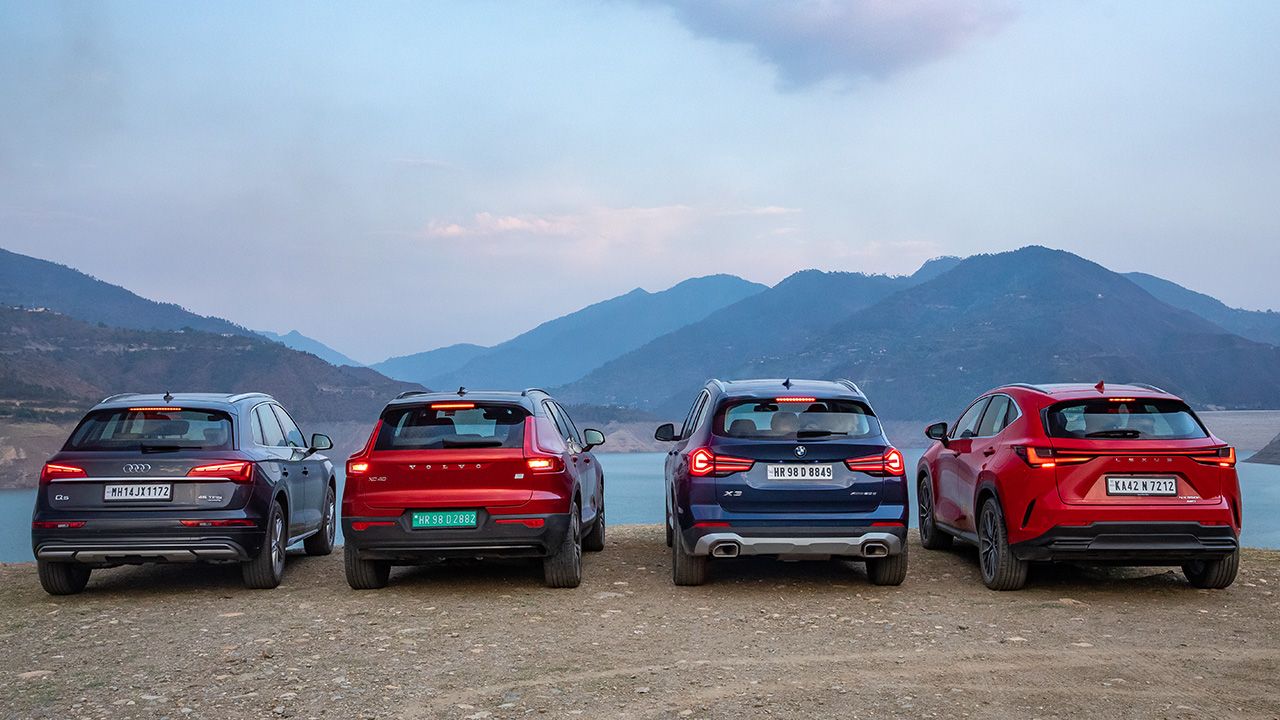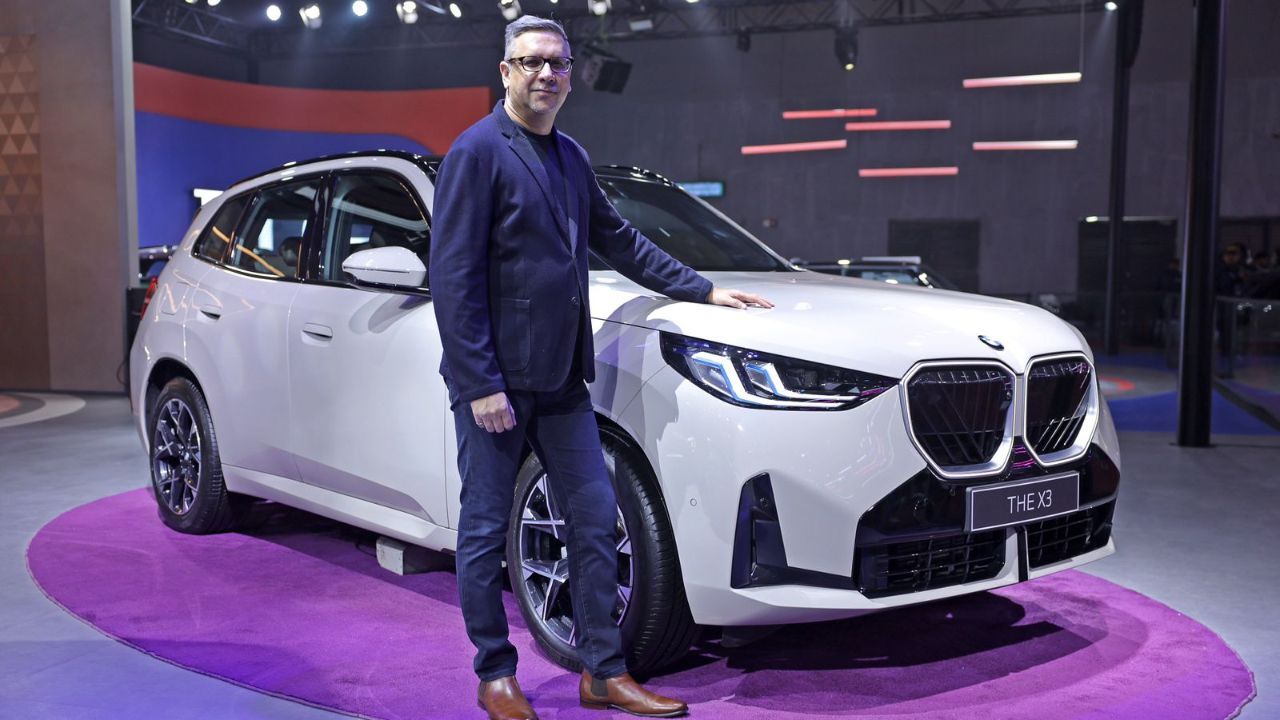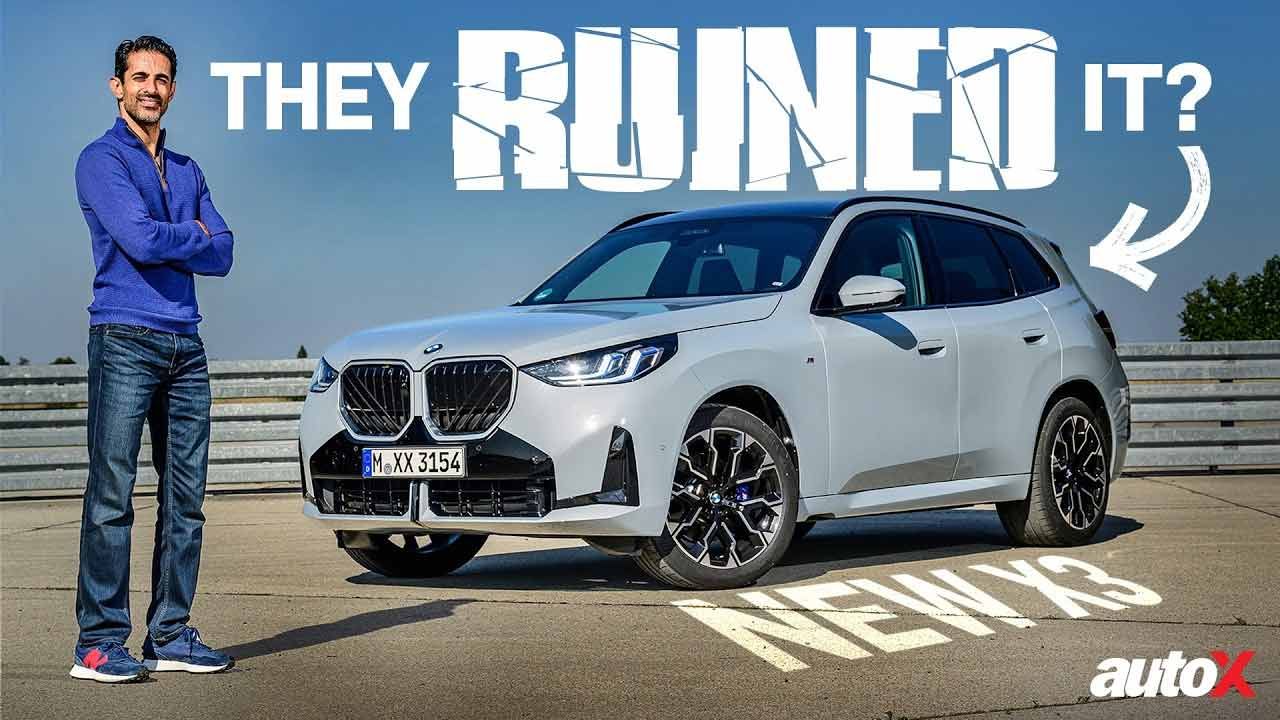Audi Q5 vs BMW X3 vs Lexus NX 350h vs Volvo XC40 Recharge: Comparison
Have 70 lakh to splurge on a luxury SUV but can’t make up your mind on which type of powertrain – electric, hybrid, petrol, or diesel – to choose? Our 800kms road test, featuring four SUVs from each genre, should come in handy then…

Have 70 lakh to splurge on a luxury SUV but can’t make up your mind on which type of powertrain – electric, hybrid, petrol, or diesel – to choose? Our 800kms road test, featuring four SUVs from each genre, should come in handy then…
Word is out that electric cars are the future, and everything else is going to become obsolete going forward. Now, irrespective of where your loyalties or interests lie, that’s an accurate analysis. Carmakers today are pumping crazy money into the research and development of EV technology. The automotive industry and the powers that be are all charged up for a cleaner tomorrow, or so they would have you believe.
While EVs will indeed rule our roads sooner than later, let’s not make the mistake of taking our eyes off the present. Electric cars may be coming in thick and fast at the moment, but the idea of electric motoring hasn’t yet dawned on the average motorist. However, there’s no denying the fact that they’re gaining popularity, almost as quickly as they accelerate.
Getting on the EV bandwagon might sound tempting, but a large chunk of car buyers are still expected to put their hard-earned money on good old ICE (internal combustion engine) powered cars. Is it the right investment though? You see, despite the drawbacks of EVs, more and more motorists are picking up plugs instead of nozzles. So, if you’re planning to spend big bucks on a diesel or petrol vehicle, give it a rethink, maybe.

The battle between EVs and ICE-powered vehicles should, ideally, benefit hybrid cars the most. It’s a classic case of two fighting cats and a monkey. However, the conspicuous lack of good hybrid options in the country is hardly encouraging.
Now, if you’re in the market to gift yourself a ₹70+ lakh luxury SUV, you’re one of the lucky few in the country who’s got the option to choose between all four types of powertrains. And what’s interesting is that all these options are fairly new. The second-gen Lexus NX 350h Hybrid just made its India debut. BMW recently gave the X3 a shot in the arm, and it still has a diesel engine on offer. And Audi, recently, refreshed the Q5 and brought it back in a petrol-only avatar. As for your electric option…well, you’ll have to make do with the upcoming Volvo XC40 Recharge, for it’s the only luxury EV under a crore.
To find out the best overall powertrain on the list, we had to spend a couple of days with each vehicle. So, we decided to head out of Delhi towards the hills of Uttarakhand to see how each one of these behaved in different driving conditions. And we weren’t just looking at how they drive – we delved into finer details like fuel economy and daily running costs. We even made an effort to find out which of the four is the cleanest mode of propulsion.

Volvo XC40 Recharge
The Good
Neck-Snapping Acceleration: With its dual-motor setup sending a total of 408bhp and 660Nm to all four wheels, the Volvo is miles ahead of all the other SUVs here in terms of performance. It clocks 0 – 100km/h in 4.9 seconds, and that’s quick by any standards. For reference, the next quickest vehicle here is the Audi Q5, with a 0 – 100km/h time of 6.3 seconds, but even it feels like a moving roadblock when you’re behind the wheel of the Volvo! What made driving the XC40 Recharge on highways immensely fun was its instantaneous acceleration. Overtaking slow vehicles – well, everything on the road was slow in comparison, if I’m honest – was a breeze. Unlike conventional cars, where you’ve to wait for a downshift or the engine to rev to its sweet spot for an overtake, it’s more like an On/Off setting in the Volvo – there’s simply no need to wait.
Cruise King: The XC40 Recharge’s highway manners are impeccable! The ride is supple – it feels rock-solid at high triple-digit speeds – and the AWD grip is phenomenal. The cabin remains virtually noise-free, and the comfy driver’s seat makes long-distance driving effortless.

Real-World Range: Volvo claims the XC40 Recharge can do 418kms on a full charge. Now, this has to be taken with a pinch of salt, for real-world driving can cause a major drop in range. Surprisingly, though, it covered almost 370kms on a full charge, which was quite close to its claimed range.
Emissions & Running Costs: While electric cars aren’t as clean as they are claimed to be – Volvo’s own study shows that the manufacturing process of an EV SUV generates 70% more emissions than that of its ICE-powered counterpart – there’s no denying that EVs produce zero tailpipe emissions on the road. And in polluted cities like New Delhi that does make a difference.
'Everything else on the road feels like a moving roadblock when you’re behind the wheel of the Volvo'
The Bad
Range Anxiety: Usually, people go on road trips for some peace and calm. But in an EV, you can forget about all that, especially while travelling long distances. Range anxiety is a real thing, and while there are public chargers at every 80 – 100kms on popular highways, such as Delhi-Dehradun, you can’t rely on one alone. Sometimes the system throws an error, sometimes there’s a compatibility issue, and sometimes they conk off right when you plug them in. So, you end up wasting a lot of time finding a working charger. But, that’s not all. The entire process can also be mentally exhausting. Sure, it’s more of an infrastructure problem than a product issue, but still, it is what it is.

Driving Dynamics & Comfort: There’s no getting around the fact that EVs are heavyweights, something that greatly affects their driving dynamics. At 2,200kgs, the XC40 Recharge weighs over half a tonne more than its petrol-powered sibling. All this extra weight is quite evident when you hustle it around the bends – it feels heavy and virtually leans on its sides, making you aware of the bulk that it packs underneath. The brakes, too, feel wooden, and the over-aggressive regen system decelerates in an extreme manner – you can turn it off completely, though. The ride quality at low speeds, especially over less-than-perfect stretches, is jittery as well. And since it’s a size smaller than other SUVs here, the rear seat space is compromised, and the quality levels aren’t as good as conventional ICE-powered cars in the same price bracket.
Pricey: While running an EV is light on the pocket, driving one home from the showroom floor will cost you a heck of a lot more than its regular ICE counterpart.

Lexus NX 350h Hybrid
The Good
Best of Both Worlds: Hybrid vehicles are the perfect middle-ground between EVs and conventional cars. And the all-new Lexus NX 350h walks that talk quite impressively. Underneath its sharply creased bodywork lies a 2.5-litre four-cylinder naturally aspirated petrol engine, which works in conjunction with two electric motors (one on each axle). The total system output stands at 240bhp, and while Lexus won’t reveal the peak torque, it’s likely to be in excess of 350Nm. When you set off, the NX starts rolling in full EV mode, but as soon you ask for more performance – usually, around 30km/h – the petrol engine joins forces with the electric motors and takes on from there. Even though it’s AWD, the rear wheels are driven only by the electric motor. Even then, the system can split the front-rear torque from 100:0 to 20:80. It may not be the quickest SUV on the list – the 0 – 100km/h sprint takes about 7.7 seconds – but even that’s brisk. What’s more, it’s quite efficient too. It managed to return an impressive fuel economy of 13 – 15km/l.
Special Appearance: There was a time when Lexus was considered a boring brand. Not anymore though. This second-gen NX 350h may look extremely similar to its predecessor, but it oozes style. In this sparkling shade of red, clubbed with the signature Lexus design elements like a large spindle grille, katana-sharp LED headlamps, 20-inch alloys, and a seamless light band at the rear, the Lexus looks sharp and sexy. It’s got an X-Factor that others can’t match.

The inside tells a similar story. With its e-latch door handles, iPad-like 14.0-inch touchscreen, sumptuous seats, and the high-quality 17-speaker Mark Levinson sound system, the NX 350h’s cabin feels the most special of the four cars here. The quality and touch-and-feel of components in the cabin are easily the best, which are probably only matched by the BMW here. On the whole, it won’t be wrong to say that it feels as if it belongs to a segment above.
Ride-and-Handling Balance: Another area where the Lexus simply excels is in the ride-and-handling department. The ride comfort is brilliant, and while it may not be as plush as the Q5 on all kinds of roads, it runs the Audi very close. It handles quite well too – the steering is well-weighted and feels nice and chunky in your hands. The body roll isn’t as prominent as the Audi, and overall, it maintains a good level of body control.
'The Lexus looks sharp and sexy. It’s got an X-Factor that the others can’t match!'
The Bad
NVH: As long as it is in the EV mode, the NX is super silent. However, the moment its petrol engine kicks into action, it gets a little too audible inside the cabin. Similarly, the CVT gearbox is noisy, and the rubber band effect rears its ugly head when you push the engine harder. This powertrain clearly doesn’t like to rush things up.

Expensive: While Lexus brings hybrid tech at a more affordable price tag than an EV, the acquisition cost isn’t low by any means. The Luxury trim you see here is priced at a premium of over ₹5 – 6 lakh over the Q5 and X3 petrol variants. Not to mention, it isn’t actually as kind to the environment as an EV.

BMW X3 xDrive20d
The Good
Diesel Grunt: Diesel and SUVs used to be like an inseparable pair of twins. A real SUV is meant to go anywhere and for that, a diesel mill would provide it with real torque. The SUV world might have changed for better or worse since, but driving a diesel SUV still gives you great (guilty) pleasure. The X3 diesel is a case in point. Despite being the least powerful of the lot, the 2.0-litre diesel engine of the X3 is the most tractable powertrain here (except the Volvo, for obvious reasons), and its 8-speed gearbox’s seamless shifts are a work of art. Sure, BMW’s bigger 3.0-litre six-cylinder diesel would have added more oomph, but for everyday efficiency and driving, this four-cylinder diesel engine in the X3 is more than adequate.
Driver’s SUV + Comfort: On the long and flowing bends of Uttarakhand’s hills, the X3 really came into its own. Its body control was the tightest of this bunch, and it was the most fun to drive. It had the best steering feel and feedback, and there’s this fluidity in the way it stitches corners together that none of the others could match. Its AWD system’s rear-wheel bias sure helps make it more playful, too. What’s more, none of this comes at the expense of ride comfort. Another thing that’s worth mentioning is its infotainment system. BMW’s iDrive turned out to be the most intuitive and seamless of all four cars here. The wireless Apple CarPlay/Android Auto is effortless to use.

Efficiency & Emissions: Before electrified vehicles barged onto the scene, it was diesel that ruled in the efficiency department. Now, while the running costs of a luxury diesel car aren’t the lowest anymore, it’s still quite efficient. Over the entire journey of 800kms, the X3 managed to return a phenomenal 11km/l (highway + city + hills) – not the best here, but much better than the petrol Q5.
Another thing that’s worth mentioning is the emissions. While regulators and environmentalists will have you believe that diesel is the devil’s fuel, it isn’t entirely the case. You’d be surprised to know that the diesel X3 emits less carbon dioxide than its petrol counterpart (154g/km vs 170g/km)! What’s more, thanks to advanced emissions controls tech like DPF (diesel particulate filter) and SCR (selective catalytic reduction), modern-day or BS6 diesel engines produce much less soot while NOx levels are said to have dropped by 90%! Come to think of it, if it weren’t for bad press and ‘dirty’ politics against diesel, it might well be the cleanest powertrain (manufacturing + real-world running) here!
'There’s a fluidity in the way the X3 stitches together corners that none of the others can match'
The Bad
It’s a Diesel: Well, it being a diesel is enough to put off new luxury car buyers, isn’t it? Aforementioned facts and figures aside, the overall sentiment against diesel is negative, and authorities around the globe are clamping down on diesel cars heavily (higher taxation, 10-year registration, etc.). Not to mention, memories of Volkswagen’s Dieselgate are still fresh in the hearts and minds of cynics, so it’s highly unlikely for the world to soften up to diesels again.

Value for Money: The X3 isn’t the most spacious or the most powerful SUV here. The rear seat is a bit tight and it’s hard to justify its nearly ₹70 lakh (on-road) price tag. Not to mention, it misses out on some crucial features like a 360-degree camera and wireless phone charger.

Audi Q5 45 TFSI
The Good
Safe Bet: Let’s be honest now, shall we? No matter what anyone says, a petrol-powered SUV is currently your safest bet. It’s a tried-and-tested formula, but unlike diesel, petrol hasn’t quite yet attracted the ire of policymakers. Similarly, unlike an EV or a hybrid car, the tech underneath isn’t complicated or hefty, meaning it doesn’t affect driving dynamics severely. The petrol-only Audi Q5, then, can be termed as the default and ‘safe’ choice.
Smooth Operator: Say what you may about the instantaneous torque of an EV or the solid mid-range of a diesel, but when it comes to driver engagement, nothing can match a high-revving petrol motor, period! In this regard, the Q5’s 245bhp and 370Nm producing 2.0-litre turbo engine surely lives up to the expectations. It’s rev-happy, super responsive, and produces some rather raspy noises. The 7-speed dual-clutch transmission complements the engine’s urgency with its lightning-quick shifts. Although it isn’t quite as smooth as BMW’s torque converter at low speeds. That said, all of us who were on this trip unanimously agreed that the Q5’s powertrain was the most effortless and engaging to drive, especially in the hills.

Space & Comfort: As you’d expect from an Audi, the Q5’s ride-and-handling balance is spot-on. Plus, its rear bench is the most spacious, alongside the Lexus. The ride quality is stellar too. Premium features like the Bang & Olufsen sound system, Audi Virtual Cockpit, 3-zone air-conditioning, and a neat and clutter-free interior give the Audi a rich and premium feel, albeit with a touch of subtlety. It’s a perfect luxury SUV if you want something subdued and understated.
'As you’d expect from an Audi, the Q5’s ride-and-handling balance is spot-on'
The Bad
Heavy Drinker: With 8 – 9km/l, the Q5 turned out to be the thirstiest SUV on the list. With petrol prices soaring to new heights every second day, you’ll definitely feel the pinch in your pocket, especially when you’re on a road trip.
Plain Jane: Among the four vehicles here, the Q5’s design is the least exciting. Compared to the edgy look of the Lexus or the bold-faced BMW, the Audi looks a little plain, bland even. Barring the Volvo, which belongs to a lower segment, the Audi’s interior doesn’t look as special as the Lexus or the BMW. In fact, the plastic quality of some components, like the indicator stalk and air-con buttons, is questionable. In addition to that, for some reason, the MMI refused to connect to Apple CarPlay even after multiple attempts. Not to mention, neither CarPlay nor Android Auto connectivity is wireless.

Soft Corner: The Audi, quite literally, leans a little too much on the comfort side of things. Even when you’re not pushing it hard around corners, it doesn’t inspire confidence like the other German here. Sure, the grip of the quattro AWD is unflinching, but even in its sportiest ‘Dynamic’ mode, the steering feels disconnected and understeer sets in early. Also, there’s excessive body roll. After a point, neither you nor the fellow occupants will enjoy the ride, meaning you’ll have no other option but to hold your horses. It’s a bit of a shame because the Q5’s petrol powertrain begs you to drive hard, but the chassis just won’t play along.
Verdict
When we thought of this comparison test, we imagined picking a winner would be a head-scratching affair. However, it didn’t turn out to be so. And here’s why.
The NX’s hybrid powertrain is hands-down the best overall in the current scheme of things. You have got a nice mix of performance and fuel economy, and it is also relatively less toxic to the environment. At the same time, it’s not as impractical as an EV. However, what tilts the verdict in favour of the NX, even more, is the fact that it looks and feels the most luxurious of the lot. Sure, Lexus’ dealer network isn’t as expansive as the Germans as of now, but, then, it does have that impeccable Japanese reliability. The NX 350h has everything going for it.

If you love spending more time behind the wheel, though, the Germans still make more sense. While the X3 is a better driver’s SUV, its prospects aren’t as bright, given the thick dark clouds looming over the future of diesel vehicles. The Q5, on the other hand, is the safest and the most conservative investment of all powertrain options – think of it as a fixed deposit with guaranteed returns.
'EVs might very well be the future, but they don’t yet have the measure of their ICE-powered siblings, including hybrids'
As for the XC40 Recharge, or electric cars in general, well, consider it only if it’s going to be your second car or something that you’ll use primarily for commuting or driving within the city. That’s because as soon as you take it out of the safe confines of the city, the cracks in the EV infrastructure become visibly apparent. During this 800kms trip, we might have saved a couple of thousand bucks in running costs, but you can’t really put a price on the time and effort you waste in finding a charger that works – out of the nine chargers that we tried, only four worked.
On a long journey, all this can get a bit harrowing, for you’re always anxious about running out of juice in the middle of nowhere. Sure, it’s not the fault of the car and is more of the infrastructure problem, but it still is a problem nonetheless. EVs might very well be the future, but they don’t yet have the measure of ICE-powered vehicles, including hybrids, especially when you drive them out of their ‘comfort zone’.
*Cost per kilometre calculated using commercial electricity rates at public chargers.
CO2 emissions data sourced from the respective carmakers. All prices are ex-showroom.
Read more:
Kia Carens vs Hyundai Alcazar vs Tata Safari vs Mahindra XUV700: Comparison
Motors: Dual Permanent-Magnet Synchronous
Battery: 78kWh Liquid-Cooled Li-ion
Transmission: Single-Speed / All-Wheel Drive
Peak Power: 408bhp
Peak Torque: 660Nm
Range: 418kms (claimed)








Write your Comment on